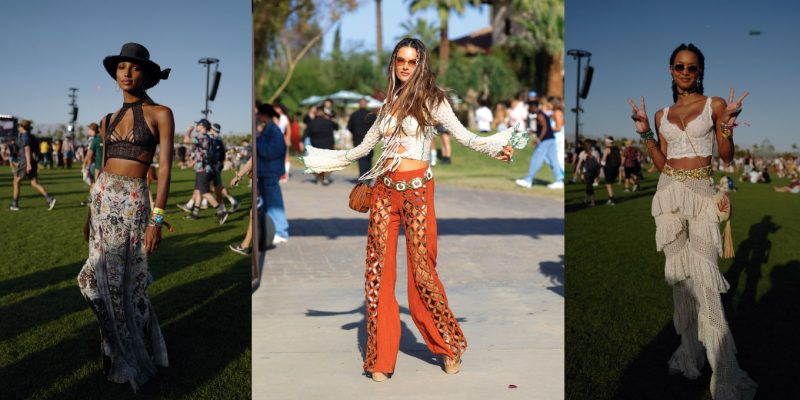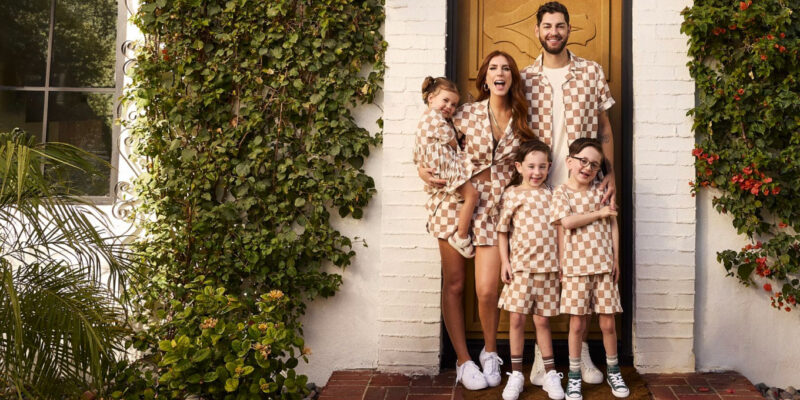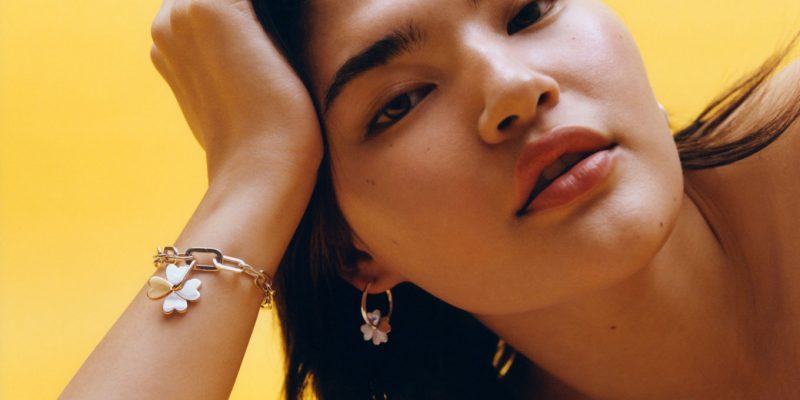Trends
The Babydoll Look Is Having Its Fashion Moment
Oh, baby! The iconic look has been captivating the fashion world since the mid-’90s, and it continually morphs to reflect our current fashion mindset.
by : Caia Hagel- Oct 25th, 2022
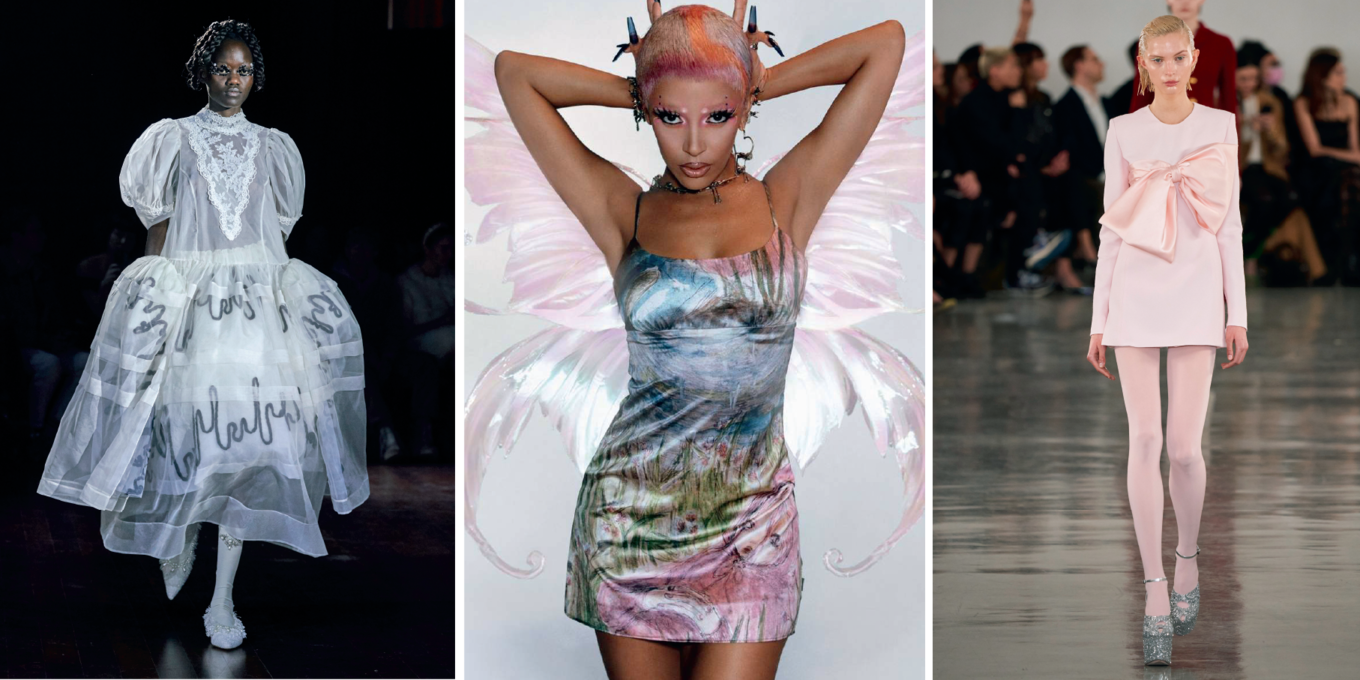
COURTESY OF IMAXTREE (SIMONE ROCHA & GIAMBATTISTA VALLI) & COURTESY OF HARLEY WEIR (HEAVEN BY MARC JACOBS)
When images of Linda Evangelista, Naomi Campbell and Christy Turlington in the classy babydoll looks in Anna Sui’s spring/summer 1994 show—her debut—went everywhere, they ignited a sense of femininity deep in the Western psyche that has been growing into a counterculture ever since. Recalling the event, which marked her unique and enduring contribution to fashion, Sui told The New York Times: “I started getting calls from all the supermodels. It was, ‘Can I get a dress like that?’… I still always do that babydoll dress in one form or another. To this day, it’s the most important part of my business.”
The long- or short-sleeved lace-collared minidress—typically worn with bare legs or opaque leggings, flats or platform Mary Janes and hair bows, headbands or barrettes, along with kawaii makeup (which softens features to portray a doll-like innocence and adorableness with big vulnerable eyes and pouty heart-shaped lips)—epitomizes a subtle, sexually introverted girl whose inner world is fuelled by a vivid imagination: She reads, she writes and she illustrates her thoughts in a paper journal with pretty pens. She is shy, her voice is gentle and she is caring but also in need of care. She has an allure that’s very different from that of her more brazen competitors—the feminist and the femme fatale.
Brigitte Bardot played with this “coquette” look in 1960s France. “Dolly birds” brought an equivalent sultry girlishness to 1980s London. The 1990s saw grit being added to the motif with figures like Courtney Love, who favoured babydoll dresses while fronting her girl band, Hole. Hello Kitty, the ultimate kawaii brand, was refreshed and expanded in the ’90s as well to include products aimed at teens and adults rather than pre-adolescent girls, which coincided with a new worldwide obsession with Asian culture and beauty standards.
 PHOTOGRAPHY, COURTESY OF ANNA SUI RAOUL GATCHALIAN (ANNA SUI)
PHOTOGRAPHY, COURTESY OF ANNA SUI RAOUL GATCHALIAN (ANNA SUI)Outside the West, in a more political milieu, the babydoll trend took hold in the place that inspired it when Japanese women became more visible in the workplace in the mid-’70s, marking a shift in gender balance that uprooted centuries of tradition. Japanese women invented the “burikko,” or childlike woman, favouring cute aesthetics and kawaii makeup. This portrayal of women alleviated the threat of female emancipation and increased the Japanese girl’s appeal regardless of how her social and financial freedom separated her from both the geisha and housewife ideals. In her piece Eternal Maidens: Kawaii Aesthetics and Otome Sensibility in Lolita Fashion, author An Nguyen argues that the babydoll subculture is more than an appeasement of the man’s world. “Kawaii fashion is not an attempt to change the institutions that constrain women but rather is an outright refusal of them,” she writes. “It is an endeavour to find meaning outside the confines of work and marriage.” For girls and women everywhere, the doll archetype provided an escape from the expectations and enormous responsibilities of being a girl-boss-like working woman while also letting them be a sensitive and caring friend, partner and mother. Being cute becomes a way to resist the adult world as it is served to women, where there are only two categories of femininity still remarkably unchanged since they were first defined by Freud in his Madonna/whore complex.
The babydoll trend continued to morph into the mid-aughts, when Tumblr girl bloggers favoured the look. Soon after, gen Z tweens took it further by posting streams of babydoll-face-filter selfies, becoming a generation of Lolita ingenues striving to look like Japanese anime characters. With the cultural backdrop of Blair Waldorf’s preppy babydoll in Gossip Girl and Marc Jacobs’ many versions of the dress, this form of femininity’s influence had wide appeal. On the fall/winter 2022/2023 runways, the babydoll was shown in new iterations: with knitwear, running shoes and high ponytails at Molly Goddard, extra-long nails and so much lace at Kim Shui and a frothy romantic vibe at Valentino Haute Couture.
In contrast, Simone Rocha’s fall/winter 2022/2023 collection brought a deep gothic feel to the girl-child pin-up. Featuring lots of black, a sea of bows, platform laser-cut Mary Jane sandals and eye makeup that took the kawaii eye to ghoul lengths, this evolution of the babydoll suggests that a darker woman hides behind the sweet exterior. The Rocha version has given this form of femininity a new power that we haven’t seen yet in the babydoll trajectory, except in gothier K-pop stars like AleXa, Dreamcatcher and PinkFantasy. Given the hype around Marc Jacobs’ line, Heaven—with its illustrations of emo-goth babydolls by young Japanese-American artist Eri Wakiyama (@mermaidhair), texts and graphics from Wong Kar-Wai’s film Fallen Angels and ad campaign starring a supernatural-winged Doja Cat—and the fact that everyone from Diana Silvers to Winona Ryder is wearing it, it’s clear that dark baby is a trend to watch.
Newsletter
Join our mailing list for the latest and biggest in fashion trends, beauty, culture and celebrity.
Read Next

Beauty
The Prettiest Mani-Pedi Colour Combos to Try This Summer
Mix and match.
by : Allie Turner- May 3rd, 2024
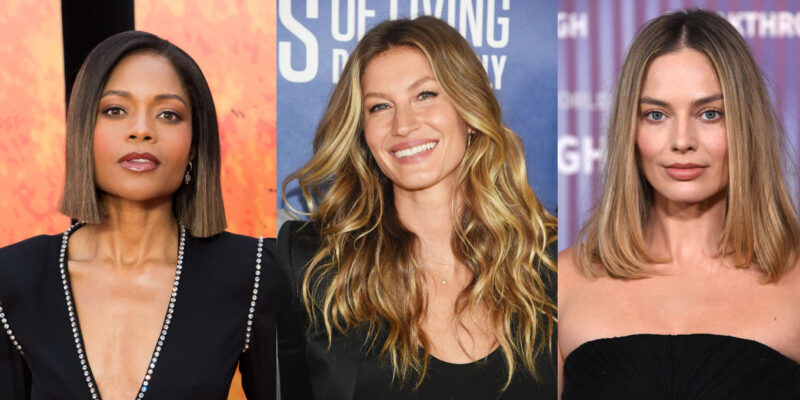
Beauty
Balayage Hair Ideas You Need For Your Next Trip To The Salon
Caramel hair is but a click away.
by : George Driver- May 3rd, 2024
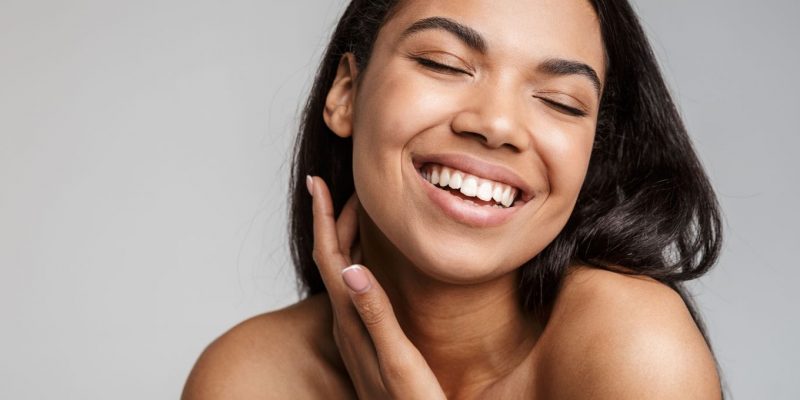
Beauty
ELLE Tried It: Five Serums to Up Your Skincare Game
Members of the ELLE team tested Avène Dermatological Laboratories’ five new concentrated serums. Here's what they thought.
by : ELLE Canada- Apr 25th, 2024

